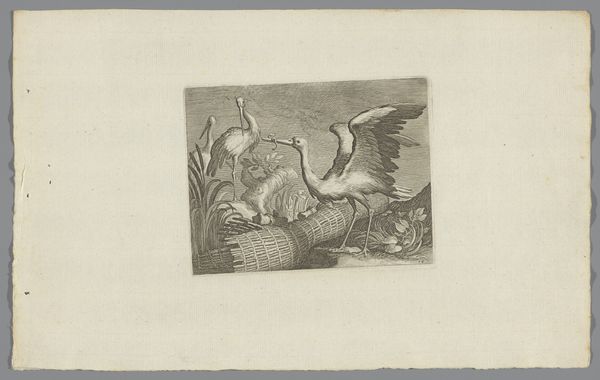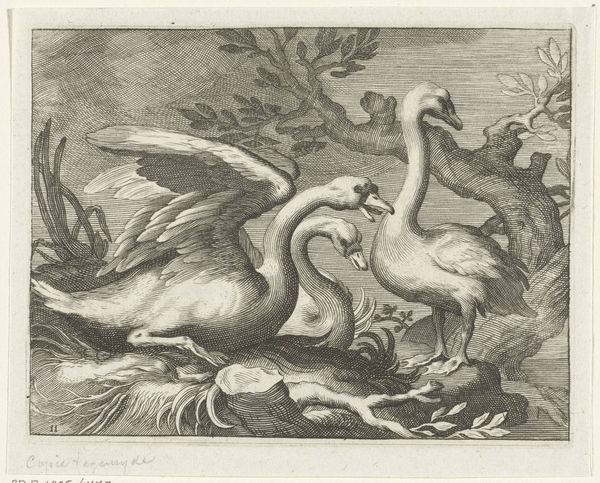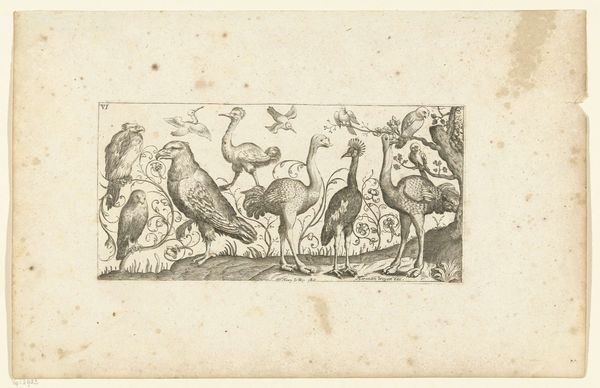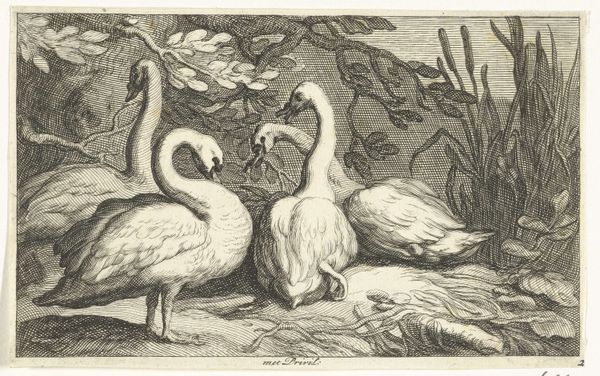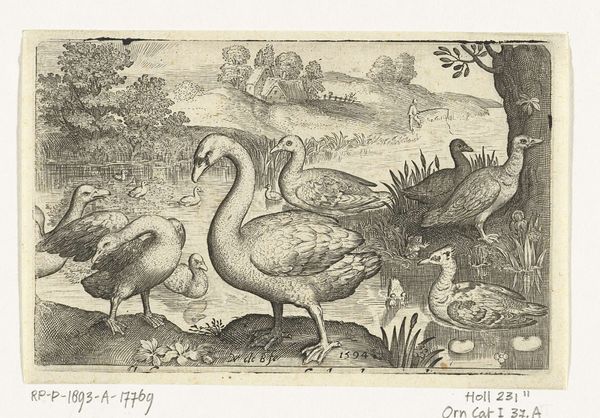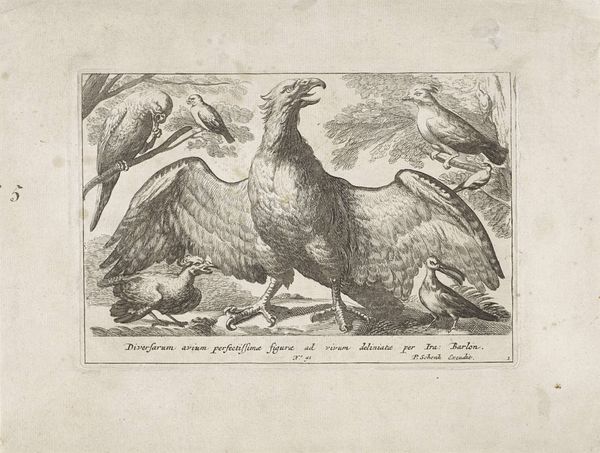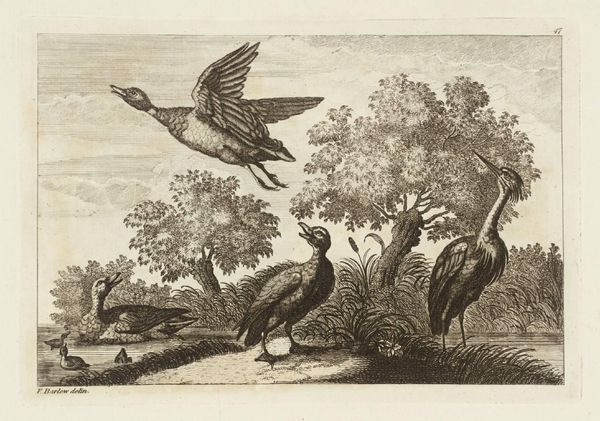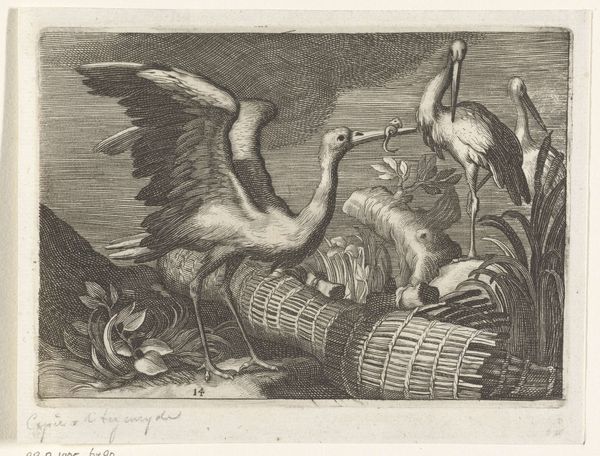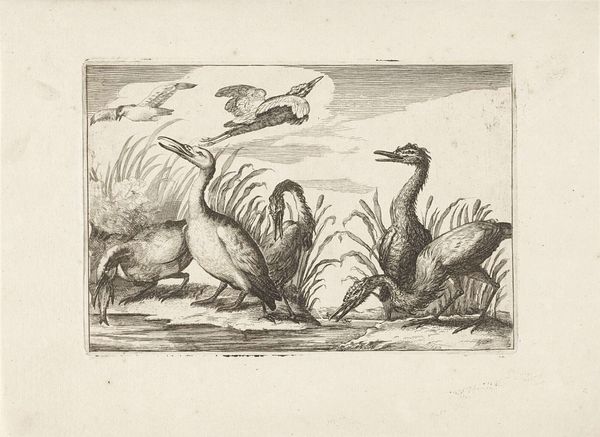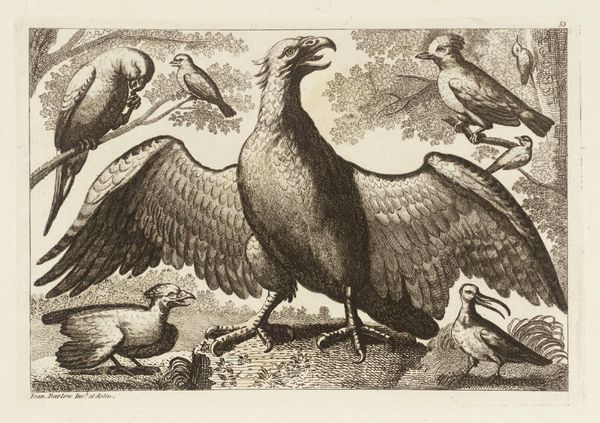
print, etching
#
baroque
#
animal
# print
#
etching
#
old engraving style
#
landscape
#
figuration
Dimensions: height 115 mm, width 145 mm
Copyright: Rijks Museum: Open Domain
Editor: This is "Zwanen," or "Swans," an etching from between 1611 and 1650, housed here at the Rijksmuseum, created by an anonymous artist. It’s remarkable the kind of detail they achieved in printmaking. What draws your eye when you look at it? Curator: What fascinates me is how a simple print like this speaks volumes about the production and consumption of images during that era. Etchings weren't just aesthetic objects; they were commodities. Think about the workshops churning these out, the labor involved in creating the plates, the paper itself. This wasn't fine art in the modern sense; it was part of a larger system of visual communication and exchange. Editor: That makes a lot of sense. How do you mean "exchange"? Curator: These prints, precisely because of their reproducibility, circulated ideas and styles far more widely than unique paintings could. Look at the composition – pastoral landscape, classical elements; this aesthetic was in demand, it was a style that sold. It became a form of currency, and demonstrates how consumer desires helped determine artistic production. Editor: So you're saying that this etching wasn’t necessarily created out of pure artistic expression but shaped by economic and social factors? Curator: Exactly. The swans are elegantly depicted, of course, but beyond the immediate beauty is the evidence of a larger machine – the production, the distribution, the consumption – that the image was bound up with. Editor: I hadn't considered it that way. Viewing it as a commercial object rather than a purely artistic one really changes my understanding. Curator: That interplay of artistry and labor shapes our understanding of not just this work but of artistic creation throughout history. Editor: I will definitely remember this broader perspective when studying other artworks. Thank you!
Comments
No comments
Be the first to comment and join the conversation on the ultimate creative platform.

